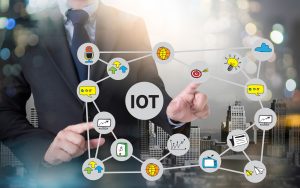Introduction:
As a technology enthusiast and researcher, I have closely followed the rapid evolution of 5G technology and its potential to revolutionize various industries. This article explores the future of 5G technology, examining its transformative impact on connectivity, its diverse applications, and the exciting possibilities it holds for a smarter, more connected world.
1. Understanding 5G Technology
Define 5G technology and its fundamental characteristics. Discuss how it differs from previous generations of wireless technology (4G, 3G) in terms of speed, latency, capacity, and reliability, enabling unprecedented levels of connectivity and data transmission.
2. Enhanced Connectivity and Internet of Things (IoT)

Explore how 5G enhances connectivity and supports the proliferation of IoT devices. Discuss the potential for smart cities, connected homes, and industrial IoT applications, highlighting how 5G enables seamless communication between billions of devices, improving efficiency and quality of life.
3. Revolutionizing Healthcare with 5G
Examine the impact of 5G on healthcare. Discuss how ultra-reliable, low-latency communication facilitates telemedicine, remote surgery, and real-time health monitoring, enabling better patient outcomes, especially in rural and underserved areas.
4. Transforming Transportation and Autonomous Vehicles
Discuss the role of 5G in transforming transportation and enabling autonomous vehicles. Analyze how 5G supports vehicle-to-everything (V2X) communication, enhancing traffic management, safety, and the development of self-driving cars.
5. Advancing Augmented Reality (AR) and Virtual Reality (VR)
Explore the advancements in AR and VR technologies powered by 5G. Discuss how 5G’s high-speed, low-latency capabilities enhance immersive experiences in gaming, education, training, and entertainment, creating new possibilities for interactive and engaging content.
6. Revolutionizing Industrial Automation
Examine the impact of 5G on industrial automation and smart manufacturing. Discuss how 5G enables real-time data exchange, remote control of machinery, and predictive maintenance, leading to increased productivity, efficiency, and reduced downtime in industrial operations.
7. Enhancing Education and Remote Learning
Discuss the role of 5G in enhancing education and remote learning. Analyze how 5G supports high-quality video streaming, virtual classrooms, and interactive learning experiences, bridging the gap between students and educators, regardless of geographical locations.
8. Transforming Entertainment and Media
Explore the impact of 5G on the entertainment and media industry. Discuss how 5G enables high-definition streaming, live events, and immersive content delivery, transforming how audiences consume and interact with media.
9. Addressing Challenges and Concerns
Examine the challenges and concerns associated with the deployment and adoption of 5G technology. Discuss issues such as infrastructure costs, cybersecurity risks, health concerns, and the digital divide, highlighting the need for collaborative efforts to address these challenges.
10. Future Outlook: The Road Ahead for 5G

Conclude with a forward-looking perspective on the future of 5G technology. Discuss potential advancements, emerging trends, and the long-term impact of 5G on various sectors, emphasizing the need for continuous innovation, investment, and global cooperation to unlock the full potential of 5G.
Informative Table: Key Applications of 5G Technology
| Application | Description | Examples |
| Smart Cities | Enhancing urban infrastructure and services | Smart traffic management, energy-efficient buildings |
| Telemedicine | Providing remote healthcare services | Real-time consultations, remote diagnostics |
| Autonomous Vehicles | Enabling self-driving cars and connected transport | Vehicle-to-vehicle communication, traffic optimization |
| AR/VR Experiences | Creating immersive, interactive environments | VR gaming, virtual classrooms, remote training |
| Industrial Automation | Optimizing manufacturing processes | Remote monitoring, predictive maintenance |
Comparative Table: Benefits vs. Challenges of 5G Technology
| Benefit | Challenge | Impact |
| High-Speed Connectivity | High infrastructure costs | Faster data transfer, enhanced user experience |
| Low Latency | Cybersecurity risks | Real-time applications, improved reliability |
| Massive Device Connectivity | Health and environmental concerns | Expanded IoT ecosystem, smarter devices |
| Enhanced Mobility | Digital divide and accessibility | Improved mobile experiences, global connectivity |
Conclusion: Paving the Way for a Connected Future with 5G
The future of 5G technology holds immense promise for transforming industries, enhancing connectivity, and enabling innovative applications that will shape a smarter, more connected world. As 5G continues to evolve, addressing challenges, investing in infrastructure, and fostering global cooperation will be crucial in unlocking its full potential.
Embracing the possibilities of 5G, we can look forward to a future where technology seamlessly integrates into every aspect of our lives, driving progress and improving the quality of life for people around the globe.









